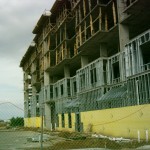A Pathway to Increased Market Share, Competitiveness, and Earnings for Canadian Precast Concrete Manufacturers and Contractors
Editor’s note: this story was first published in the Canadian Precast/Prestressed Concrete Institute (CPCI) magazine in 2005.
At the Pathways Across Canada in held in Toronto, the CPCI asked me to lead the roll out a practical program in advancing the the Total Precast Building concept. Negotiation expertise, from the scientific skills of planning, research, concessions to the artistic skills of communication and personality management has proven to be the short cut to greater profitability in other industries but precast is a unique situation in Canada. Building upon a foundation of Total Cost of Ownership (TCO) to negotiate effectively with direct and indirect customers, the challenge remains “How do we apply negotiation to make the precast industry the system of choice for construction in Canada?”
A question of negotiation strategy
How can the precast industry continuously supply the lowest TCO solutions to customers so that precast gains in market share and the increased sales add to earnings? One pathway is through a system approach to precast where all architectural and structural elements of a building’s interior and exterior walls, floors, and auxiliary features (retaining walls, stairs, etc) are designed, fabricated and erected in precast concrete. Moving to an all precast system for structural and architectural building elements comprises strategic advantages that benefit our customers and the precast industry.
As experienced sales pros and negotiators, we seize upon the cost advantages. Precast enjoys two extremely powerful advantages that have no parallel: the weather and the economy of building trades.
Weather
Only with precast is weather a negligible concern in Canada. Atmospheric and climatic conditions impose formidable challenges to most other competing building systems. In much of Canada, as the expression goes, there are four seasons: Almost Winter, Winter, Still Winter, and Dominion Day. These atmospheric facts of life are bad news for wet trade and steel frame competitors, but have little to no effect on the precast industry which can cast and erect the building in all weather conditions, remaining almost completely unaffected by extremes that stop or drastically drive up the costs other systems.
The other great advantage is the economy of trades, a veritable fantasy to the owner, the ultimate consumer. Precast buildings rise quickly with a crane, a few laborers and ironworkers, and maybe a cement mason. A battalion of other tradesmen for competing methods needlessly complicates and bogs down the process.
Building trades
If the end customer gets a higher Quality product at a quicker completion time (Delivery) and skips all the coordination problems (Service) and attendant delays, the choice of precast is the quintessential “no brainer”. A strategic negotiation plan to enhance market share and supremacy stresses these major cost advantages to the customer. Put another way, the more precast opportunities in the market, the more times the industry can get better prices, pass up marginal jobs, and still provide the lowest TCO to the customer.
The industry is positioned to promote and define needs and uses for precast. We may not have thought of negotiation in these terms, but as we move toward the next level in business, we must take our negotiation mastery and apply them in a more strategic fashion.
What is the major obstacle standing in the way? The precast industry! In 2004 at the Precast/Prestressed Concrete Institute (US PCI) and again at Pathways, I heard comments such as, “We don’t do walls,” or “We furnish, not install.” These statements are the negotiation equivalent of suicide. They negotiate away your greatest advantage and sentence you back in the pack of price focused sellers who dig the hole of lowest Price.
At the PCI Sales School in Las Vega 2004, Paul Todd, an architect, Degan Hambacher, an engineer and Buck Reinking, precast expert all agreed that precast systems are the norm in Colorado and that Price is competitive with other systems. This is the ideal Win-Win negotiation result, lowest cost and lowest price. We spoke at the 2005 Pathways of price reductions in the form of cost reductions with preferred customers. The first step on the Pathway toward achieving the Win-Win of precast systems in the Canadian market is the recognition that we can negotiate this victory.
************************************************************************************************************************************
How to negotiate precast’s cost advantages of Quality, Service and Delivery?
- Quality is superior as we manufacture in lab controlled conditions yielding precision products to high chemical and physical tolerances. It is not subject to the vagaries of a changeable work force and inclement weather
- Delivery speed and cycle time from order to completion provide enormous costs for the customer
- Service from the perspective of the owner or facility manager represents a dream come true. The fewer trades and all weather benefit of the system are unmatched by any other system.
- Price is often thought of as higher for precast, but in parts of Canada and the US where precast has become the established leader, it enjoys a Price advantage and the volume of precast allows manufacturers to make and store product during off times.
Indeed, precast used almost anywhere in Canada affords cost advantages to the owner that should allow us to out negotiate any other system.

